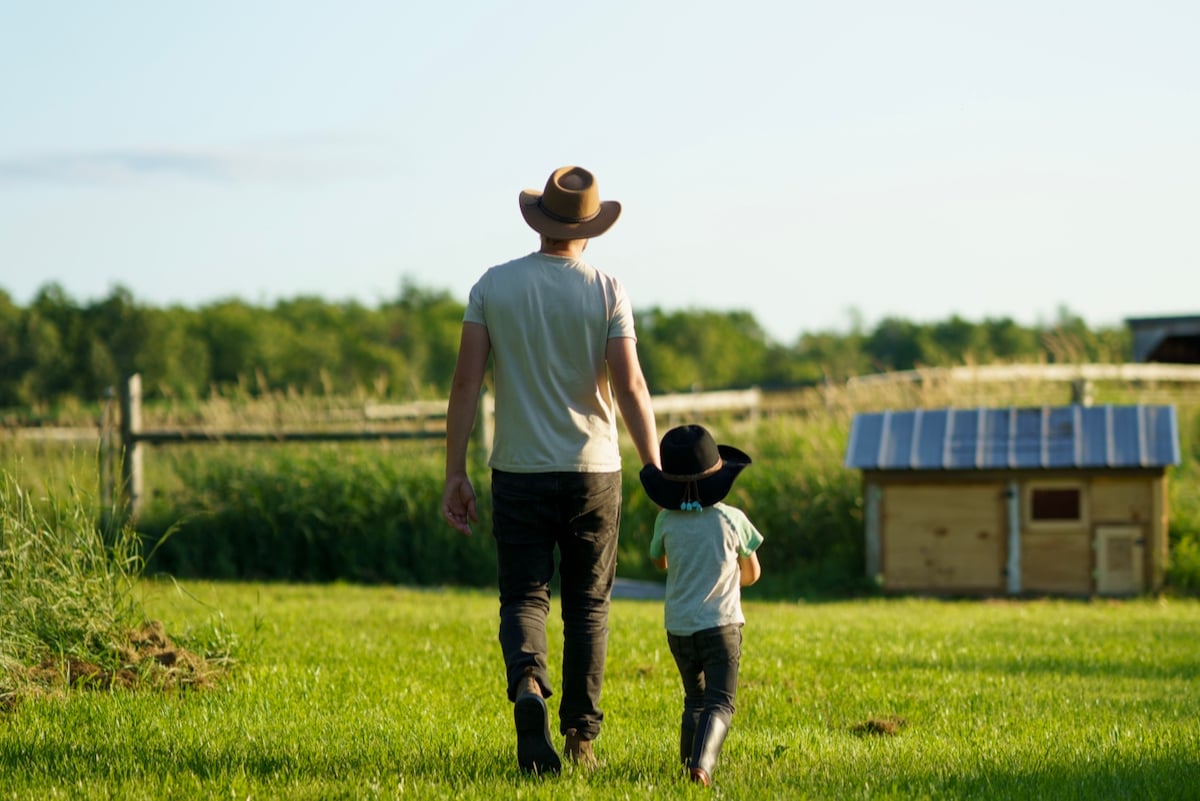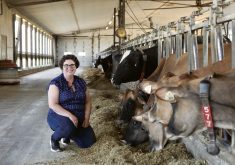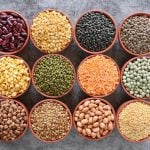Farmers have been hearing about the bioeconomy, and when we learn about new uses for hemp stalks or wheat straw or corn starch, our ears perk up. After all, diversification and new opportunities mean increased sector stability and growth.
What many Canadian farmers may not realize, however, is the sheer scale of the bioeconomy in Canada and beyond, and how global interest in the bioeconomy is expected to go viral. Estimates vary but they include numbers like $100 to $200 billion dollars by about 2030.
If Canada can be a leader in this area, it would be a boost for the country’s overall economy with big pay-offs for those who want good-paying skilled jobs, and for Canadian farmers too.
Read Also

A new spin on farm legacy
What does farm legacy look like for the next generation.
But is Canada doing what it should to secure its piece of the action?
First, let’s define the bioeconomy. It’s generally considered to include anything made from renewable resources such as trees and crops that’s beyond established uses. For trees, that’s anything beyond traditional lumber and wood products, and for crops, it’s anything beyond human food and animal feed.
The bioeconomy is usually divided (for example, by BioTalent Canada, which aims to help companies fill empty positions as the sector grows) into three domains. These are: biohealth products (biopharmaceuticals, biomedical applications and more), bioenergy (fuels, lubricants and more) and bioindustrial/biochemical (catalysts, solvents, coatings, adhesives, and replacements for Styrofoam or plastic, and so on).
Leapfrogging demand
Why is the demand in bioproducts growing? The simple answer is that so many trendlines are coming together in its favour.
Much of the interest can be attributed to an increased desire around the world for natural and sustainable products. There’s also a strong push to use material from forestry and agriculture, such as logging debris or crop residues that would otherwise go to waste.
In addition, there’s a growing demand from consumers for plant-based goods, and the fact that many bioproducts are performing at levels that are similar or better than their rivals made from fossil fuels. Bioproducts also represent an area with great potential for discovery. That is, there is active investigation into the unique properties of various plant and tree materials, and who knows where it will lead.
Here’s how Agriculture and Agri-Food Canada’s (AAFC) Industrial Bioproducts Value Chain Roundtable sums up bioproducts on its website (the next meeting of this roundtable will take place in September 2019): they “provide an opportunity to transform agricultural crops and non-food biomass (for example, straw, flax and hemp stems, purpose-grown crops) into high-value products,” which “support innovation and enhance the competitiveness of Canadian farmers, help address environmental issues and reduce Canada’s overall greenhouse gas footprint, and create clean jobs across the Canadian economy in research and development, agriculture, and value-added manufacturing.”
Global competition
It’s a good thing Canada has that roundtable up and running, along with many other national, provincial and crop-specific organizations that are focused on helping boost the bioeconomy across the nation.
Why? Because international competition is strong.
For example, the European Union has established its “Bio-Based Industries Joint Undertaking,”a C$5 billion public-private partnership with a group called the Bio-based Industries Consortium. The move builds on the EU’s first bioeconomy strategy, released in 2012. (In total, 50 countries have adopted formal strategies for the bioeconomy.)
The European Union has also set up BioSTEP: Promoting Stakeholder Engagement and Public Awareness for a Participative Governance of the European Bioeconomy.
The EU, along with Canada, New Zealand, U.S., Argentina, China, India and South Africa, also held the second International Bioeconomy Forum in May in Vancouver. The United Nations Food and Agriculture Organization also has an International Sustainable Bioeconomy Working Group with 23 members. On the industry side, the most recent annual “World Bio Markets” conference was held in Amsterdam in April.
In light of “forecasted change in climatic conditions and increasing depletion of fossil fuel sources,” as stated on BioSTEP’s website, “…the bioeconomy offers a future opportunity to reconcile economic growth with environmentally responsible action.” However, “the transition to a sustainable bio-based economy means that the historically developed structures and ways of life that appear normal today need to be completely rethought.”
Canada’s potential, and how to reach it
It’s the view of the Bioproducts Institute at the University of British Columbia that Canada is not only well-positioned to be “a” global leader in the bioeconomy, but “with its vast forests and extensive agricultural land, Canada has the potential to become the leader.” According to the institute, by 2050, more than half of human-used chemicals and other materials will likely come from biomass, and the fact that this percentage is currently less than five “suggests that in the next 30 years we will witness a revolution in the chemical sciences and engineering.”
That revolution will occur, and is indeed already started, in private labs and workshops, but it’s also being supported in Canada through government-run initiatives such as research superclusters and the Bio-innovative Renewables Network (BiRNet), which is closely associated with the institute and aims to align and lead Canada’s bioeconomic applied research efforts. (There will be lots of details in Part 2 of this story on companies and initiatives making various exciting advancements.)
However, to be a world leader in the bioeconomy, Canada must overcome a few difficulties. The institute identifies these as technical challenges, effective supply chain management, and investment risk.
Technical challenges
One of the foremost technical challenges for agriculture-based bioeconomy development, in the view of institute chair Dr. Trevor Stuthridge, lies in the fact that crop residue availability is seasonal. “Therefore you have to store residues and these materials can compost and break down, so maintaining quality can be a challenge,” he says. “We will need to store them in dry conditions ideally so they don’t deteriorate, which adds to infrastructure costs.”
To properly “feed” a large biorefinery with consistent feedstock throughout the year, Stuthridge thinks crop residues could be mixed with forestry residues. They could also be bailed, compacted and dried, or pre-treated (broken down into a form that can be used for further blending and bioprocessing, for example through pyrolysis or gasification).
Another technical challenge in Stuthridge’s mind is the need to recover materials in crop residues that can’t be discharged or should not be wasted, such as heavy metals, nitrogen and phosphorus; these need to be recovered economically and used in another form or disposed of safely. Residues can also contain dirt, stones and other debris which must be removed or can contain materials like silica, which can affect processing and maintenance costs.
Crop-based feedstock can also suffer from inconsistency of quality, says Stuthridge, stemming from the need to source from multiple farmers to achieve the volumes needed, and ways must therefore be found to manage any large variability.
Related to all this, explains Breanne Hearsum, is the technical challenge of finding cost-effective means of adapting existing manufacturing processes to use biomaterials instead of traditional materials. “Biomaterials can have very different properties compared to traditional, often non-renewable sources,” says the communications co-ordinator at the Composites Innovation Centre in Winnipeg, Man. “For example, biomaterials are susceptible to degradation at high temperatures that may be required for manufacturing of certain composite components. The tendency of biomaterials to absorb moisture can also pose challenges depending on the production method.” There is also the incompatibility of natural fibres with existing systems for manufacturing resins.
Hearsum reports, however, that new cost-effective approaches and processes are being developed. For example, resin formulations are being developed that are compatible with natural fibres, or natural fibres can be treated to better interface with existing resin systems.
Value chain management
Canada must also build solid bioproduct supply chains, the institute says. If we don’t have them in place, along with loads of data on everything from raw material availability to end-product demand, we won’t overcome the third and last challenge: reducing investment risk.
The ag value chain — i.e. gathering and transporting raw materials to bioproduct processing centres — is inherently the opposite of compact, Stuthridge explains. Compare it to forestry, where there is a centralized processing facility like a pulp mill that draws on the immediate forested lands around it. Therefore, a crop-related bioproduct manufacturing enterprise like a biorefinery needs to find ways to efficiently gather material from many farms.
Stuthridge believes this must include providing farmers with adequate incentives — or in logistics lingo, extending the value back down the value chain.
The good news for B.C., in Stuthridge’s view, is that there is huge potential for ag-related bioeconomy enterprises to use existing forestry sector infrastructure (known as “industrial symbiosis”). “This is working very well in Sarnia, Ont.,” he says. “It’s a good example of an industrial symbiosis cluster using agricultural residues and a great example of what B.C. could be doing in the Fraser Valley or similar areas. We need to get organized, need economies of scale, to adopt and adapt smart decision tools, and then bring together the resources in intelligent ways.” (Read more on Sarnia as a bioeconomy hotspot in Part 2 of this article.)
Without change, the existing, relatively complicated supply chain of ag feedstocks — and rather low amounts of certainty about feedstock supply — will impede investment in ag-based bioeconomy activities such as biorefineries. It’s basically a case, says Stuthridge, of the chicken or the egg. “It is a classic example of ‘the investors will build the technology if the supply of feedstock is guaranteed’ and ‘the people with the feedstocks will supply it if the investment in the technology is guaranteed,’” he explains. “Therefore, in many cases these bioeconomy value chains may require initial government support via investment incentives or, in some cases, subsidies for utilization of feedstocks, to encourage scale-up of biorefineries.”
Hearsum agrees supply chains are holding back the ag-based bioeconomy in Canada. She notes that there has been slow growth in the number of processing facilities. “There are still gaps where the next link in the supply chain does not exist or is at the infancy stage of establishment,” Hearsum says. “Growth of the sector is stalled.”
Hearsum also believes investors need much more and much more detailed information about the industry to conduct feasibility plans that go from farm gate to commercialization with confidence.
Access to market intelligence is also crucial for bioeconomy growth in the view of Jennifer O’Donnell, project officer at BioNB (the bioeconomy promotion organization in New Brunswick). Company leaders need to make decisions based on up-to-date information about the global demand for bio-based products, she says, as well as what’s happening with competitors in terms of new raw materials they might use and products they produce.
O’Donnell also believes Canada’s bioeconomy is only likely to really succeed if changes are made to policies and programs relating to regulations, risk financing and access to scientific expertise. These policies and programs must, in her view, move beyond traditional economic sectors. They must aim to have an impact on the commercialization of leading-edge technologies and to build new industrial opportunities. She thinks standards and procurement programs that incentivize adoption of bio-based materials, biogas and biofuels are needed to strengthen Canada’s bioeconomy, and that proposed projects should incorporate the positive environmental impact that would be provided.
Europe’s model for bioenergy
Dr. Richard Grosshans agrees wholeheartedly that incentive-focused policy is the way to go — something which he notes Europe is already doing. Grosshans is the bioeconomy lead at the International Institute for Sustainable Development, a think tank based in Winnipeg, and recently published an article entitled “Canada Should Copy Europe When It Comes to the Bioeconomy.”
In his article, Grosshans notes that the EU’s bioeconomy already accounts for 4.2 per cent of its GDP, contributes over £2 trillion in annual turnover and £621 billion in added value, and is already employing huge numbers. This, he says, is at least partly due to the fact that the EU has a bioeconomy policy/plan, one that is concrete and action-oriented.
The plan, for example, includes a £100 million Circular Bioeconomy Thematic Investment Platform to bring bio-based innovations closer to the market, and a pledge to build 300 new sustainable biorefineries across Europe by 2030. The plan also complements an EU directive that will ensure 20 per cent of the EU’s total energy needs are met with renewables by 2020.
While Grosshans believes “in short, the Europeans are significantly ahead of the game,” he also believes Canada is “already moving in the right direction,” with Quebec far out in front.
“Quebec is investing heavily in alternative energy such as biomass-based heat and electricity, they have an active carbon program, and are investing significantly through biomass incentives,” Grosshans explains. “This supports installation of biomass systems, promotes industry to develop biomass fuel-producing facilities, creates that end use needed for feedstock suppliers, and drives the industry. For ag-based (residues, etc.) to be integrated into bioeconomy activities, you need the market and the end use. And that market will only be created if there is a reason to do it, such as saving or making money. The Quebec carbon program promotes sustainable energy use, and the Manitoba ban on the use of coal for space heating drove users to investigate biomass as an alternative to using coal. But the support and incentives need to be maintained (in Manitoba) — otherwise users and suppliers lose interest and business goes elsewhere — such as to Quebec.”
At the federal level, Grosshans points out that the Canadian Clean Fuel Standard is being developed which seeks to increase use of lower-carbon fuel, including renewable natural gas. In addition, leaders of major Canadian business and non-governmental organizations have collaborated with academics to form the Circular Economy Leadership Coalition, which aims to accelerate Canada’s transition to a circular economy.
A National Bioeconomy Strategy is also being developed by BioNB and BioIndustrial Innovation Canada (BIC) with support from AAFC. In Grosshans’ view, some important priorities that could be included in the strategy are (no surprise here) creating national regulations and ongoing incentives for biomass-based energy and bioproducts such as those successfully implemented in Manitoba and especially Quebec.
The strategy, he says, could also include focused investment on biorefineries and fuel/biogas production facilities across the country to establish consistent biomass feedstock supply and end-product fuel supply.
That’s the subject for Part 2, in the next issue of Country Guide, with our look into exciting biochemical and biohealth product developments happening in Canada (and some bioenergy projects as well).















